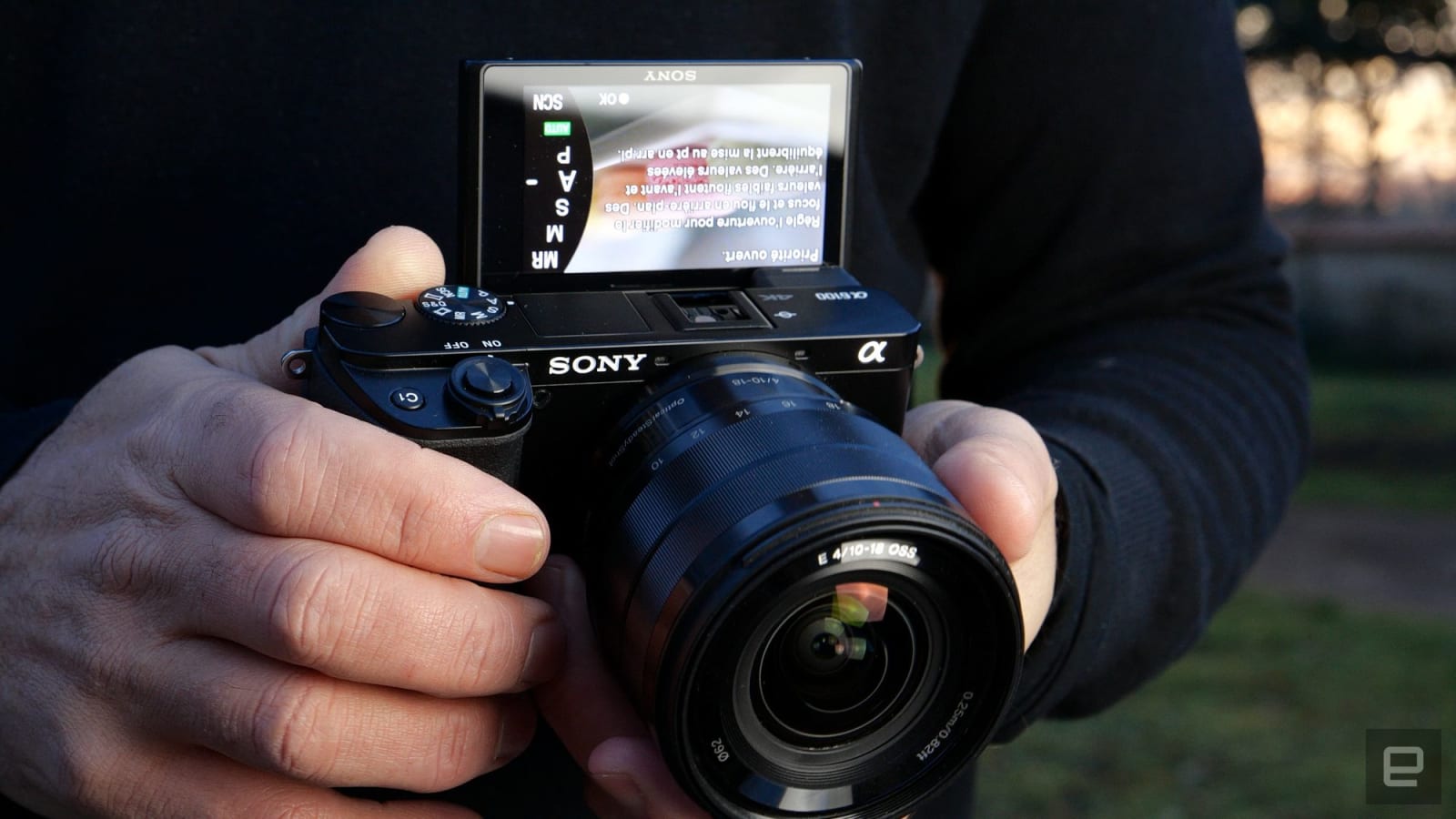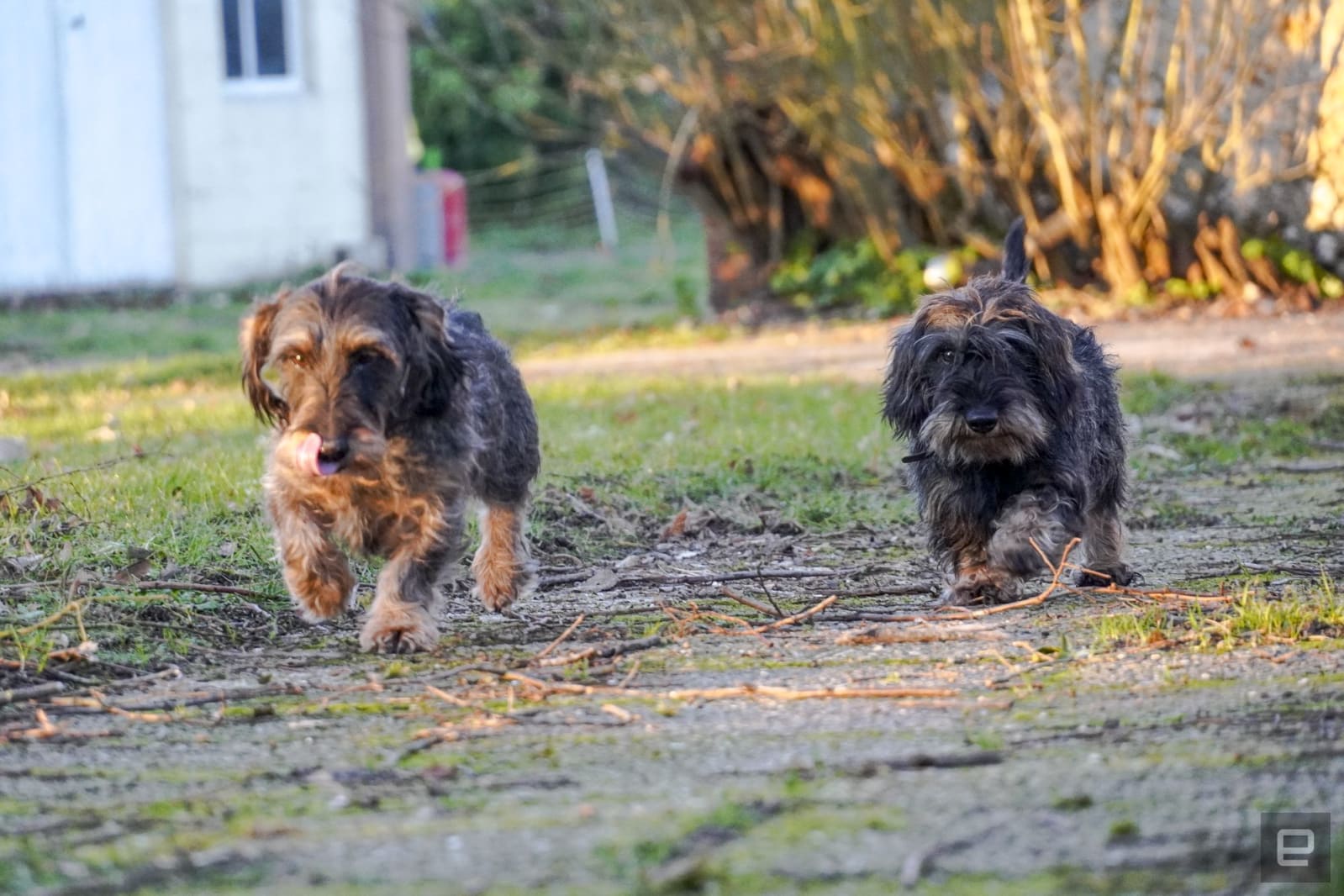Body and handling
The A6100 has largely retained all the design cues of past A6000-series models. I’ve never been a big fan because, to my eyes, these cameras are blocky and inelegant compared to Fujifilm’s rival APS-C cameras. On top of that, the A6100 still lacks dials and buttons, forcing you to rely on the menu system, which is as hard to navigate as ever.
It’s tough to find key settings like silent shutter mode and face/eye detection without a lot of hunting. The rear display doesn’t help either, as you can’t use the touch settings to access either the main or quick menus. Rather, it’s dedicated to autofocus subject selection. Considering the A6100 aimed at beginners, I think it would have been wise to offer touch controls.
A popular feature of the last camera was its compact size, and the A6100 is still very light, weighing in at just 396 grams — a bit more than Canon’s rival M50. The shape of the camera, including the smallish grip, also remains the same as before.
I guess that Sony didn’t want to mess with that winning formula. However, it would’ve been nice to have both front and rear dials, like Fujifilm’s rival X-A7.
All that said, the A6000 had even worse ergonomics and menus. I suspect that many of the novice users who might buy this camera will stick to the automatic modes and treat it more like a smartphone.
The display, at least, tilts up and around, so you can use it for selfies or vlogging — though I’d rather it had a fully articulating screen like Fujifilm’s X-A7 or X-T200. Plus, the A6100 has a few issues around vlogging, so more on that in a bit.
The electronic viewfinder (EVF) is very basic with just a 1.44-million dot LCD display, the same as before. Still, it does the job, and some models in its price range, like the X-A7, have no EVF at all.
The A6100 has the same battery as before, too. However, the camera as a whole is much more efficient, so you can get a very respectable 420 shots per charge, compared to 360 on the A6000. I was able to shoot video for about two hours on a charge, which is also very good for this category.
As for the memory situation, the A6100 still just has a single UHS-I card slot. As such, you’ll have no backup if the card fails and will see long buffering times after shooting in bursts. That said, the A6100’s main rivals in this category don’t support the more capable UHS-II card standard either.
Lenses are an important consideration when buying a camera, and Sony has a great APS-C mirrorless lens lineup, right next to Fujifilm. By contrast, Canon’s M-series APS-C mirrorless lens selection is limited, and the quality of the glass isn’t well regarded. If you’re thinking of buying the A6100, Sony’s 16-50mm is one of the worst kit lenses out there for optics and build quality, so I’d consider splurging for better glass.
Performance
When you’re looking at a combination of speed and autofocus, the A6100 is untouched among entry-level cameras. You can shoot at a best-in-class speed of 11 fps, and do so with continuous autofocus and auto-exposure turned on. That means when you use burst mode for kids, sports or other fast-moving subjects, you’re bound to get sharp photos. There is a blackout between each shot, though, which can make it a bit tricky to track your subject. (The least expensive camera with no blackout is Fujifilm’s $900 X-T30.)
The A6100 features 425 phase and contrast detect AF points, but it’s more than the sum of its specs. Sony has really dialed in its sensor, processor and AI smarts to deliver an impressive autofocus system for an entry-level camera.
Whether you’re using area or single-point autofocus, you’ll nail focus either with single-shot or continuous burst shooting. And where the A6100 really shines is with face and eye tracking. That lets you put your camera in burst mode, point it at your subject and be sure to get their eyes and/or faces in focus. It even works with dogs, cats and other animals.
If your subject turns around or disappears from view, it’ll pick them up right away when they come back. And if you have multiple subjects in a shot, you just need to select the one you want by tapping on the screen. You can also track non-living subjects (cars, etc.) just by tapping on them. The autofocus will do the rest, faithfully following them along.
Unfortunately, eye tracking isn’t on by default, so you’ll have to wade into those ugly menus to find that function. That’s normally not a huge deal, except it might stump the novice users who will buy this camera.
Unlike some models from Canon, like the M6 II, Sony gives you silent shooting that also works in burst mode. However, beware that the 24.2-megapixel sensor has terrible rolling shutter, so you could end up with skewed shots if you try to shoot fast-moving subjects in silent burst mode. The problem is especially noticeable if you pan the camera quickly.







